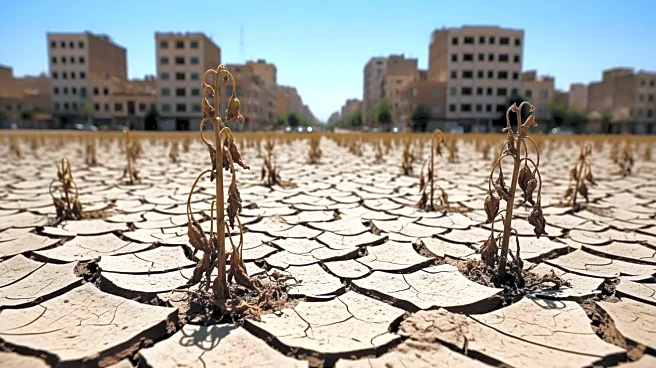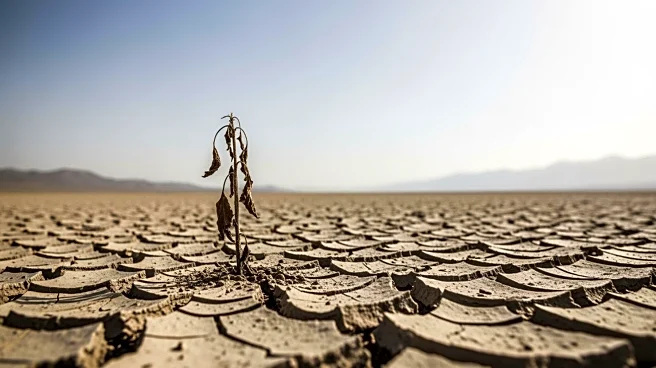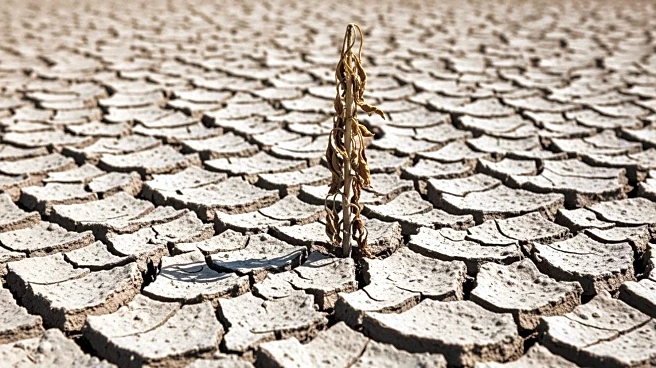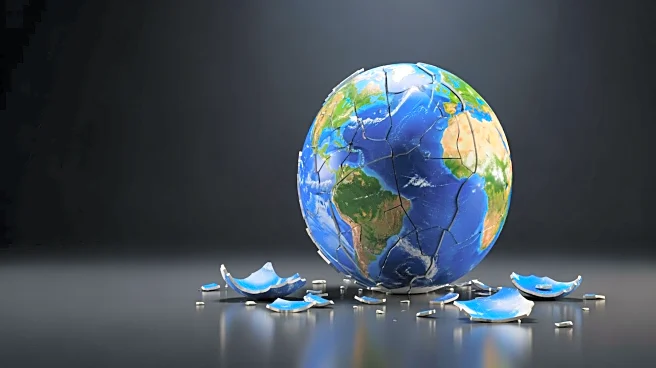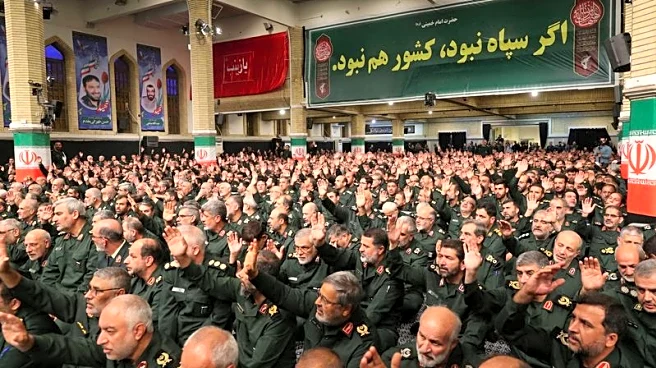What's Happening?
Iran's capital, Tehran, is facing a critical water shortage due to persistent drought and mismanagement, with President Masoud Pezeshkian warning of possible evacuations if the situation does not improve.
The city relies heavily on five main dams, which have seen reservoir capacities fall dramatically. The crisis extends beyond Tehran, affecting provinces across Iran, where communities are dependent on water rationing. The water scarcity is exacerbated by declining rainfall and overuse of limited water reserves, posing a significant threat to urban and agricultural areas.
Why It's Important?
The water crisis in Tehran underscores the broader environmental challenges facing Iran, which could lead to significant social and economic disruptions. Water scarcity threatens agriculture, urban development, and public health, potentially leading to increased migration and social unrest. The situation highlights the need for improved water management and infrastructure investment, as well as international cooperation to address environmental issues. The crisis may also impact Iran's political stability and its ability to engage in regional diplomacy.
What's Next?
Without substantial rainfall, Tehran may face strict water rationing and potential evacuations. Authorities are considering long-term reforms and infrastructure upgrades to manage water resources more effectively. The government may need to implement contingency plans, including phased restrictions and relocation efforts, to mitigate the impact of the drought. International aid and cooperation could play a role in addressing the crisis and supporting Iran's efforts to improve water management.
